Development of a murine model of early sepsis in diet-induced obesity
- PMID: 24967393
- PMCID: PMC4054609
- DOI: 10.1155/2014/719853
Development of a murine model of early sepsis in diet-induced obesity
Abstract
Sepsis, a global health issue, is the most common cause of mortality in the intensive care unit. The aim of this study was to develop a new model of sepsis that investigates the impact of prolonged western diet (WD) induced obesity on the response to early sepsis. Male C57BL/6 mice were fed either a high fat WD or normal chow diet (NCD) for 6, 15, or 27 weeks. Septic obese mice at 15 and 27 weeks had significantly lower levels of lung myeloperoxidase (26.3 ± 3.80 U/mg tissue) compared to age matched ad lib (44.1 ± 2.86 U/mg tissue) and diet restricted (63.2 ± 5.60 U/mg tissue) controls. Low levels of lung inflammation were not associated with changes in hepatic cytokines and oxidative stress levels. Obese mice had significantly (P < 0.0001) larger livers compared to controls. Histological examination of the livers demonstrated that WD fed mice had increased inflammation with pronounced fat infiltration, steatosis, and hepatocyte ballooning. Using this model of prolonged exposure to high fat diet we have data that agree with recent clinical observations suggesting obese individuals are protected from sepsis-induced lung injury. This model will allow us to investigate the links between damage to the hepatic microcirculation, immune response, and lung injury.
Figures

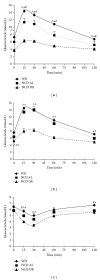
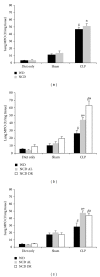
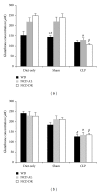


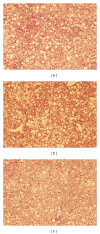

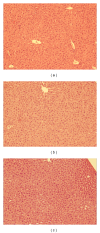

References
-
- Fantuzzi G. Adipose tissue, adipokines, and inflammation. Journal of Allergy and Clinical Immunology. 2005;115(5):911–920. - PubMed
-
- Hotamisligil GS, Shargill NS, Spiegelman BM. Adipose expression of tumor necrosis factor-α: direct role in obesity-linked insulin resistance. Science. 1993;259(5091):87–91. - PubMed
-
- Lundgren CH, Brown SL, Nordt TK, Sobel BE, Fujii S. Elaboration of type-1 plasminogen activator inhibitor from adipocytes : a potential pathogenetic link between obesity and cardiovascular disease. Circulation. 1996;93:106–110. - PubMed
-
- Mohamed-Ali V, Goodrick S, Rawesh A, et al. Subcutaneous adipose tissue releases interleukin-6, but not tumor necrosis factor-α, in vivo. Journal of Clinical Endocrinology & Metabolism. 1997;82:4196–4200. - PubMed
Publication types
MeSH terms
Substances
Grants and funding
LinkOut - more resources
Full Text Sources
Other Literature Sources
Medical
Research Materials

